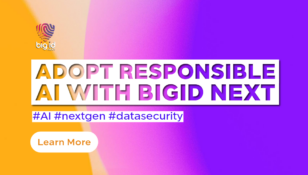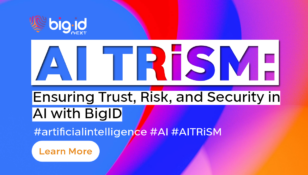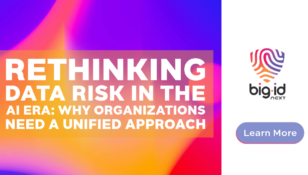What is DSPM? Data Security Posture Management 101
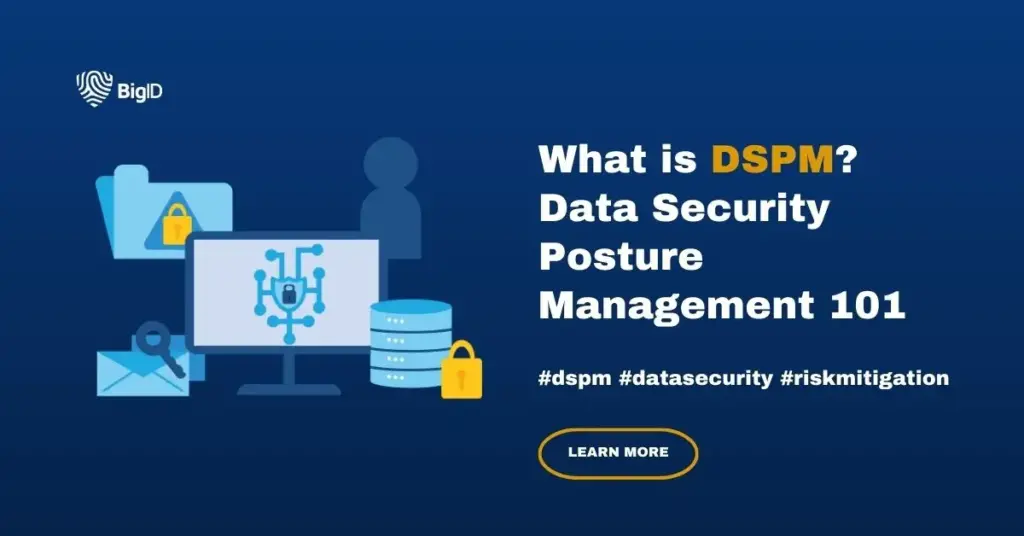
How DSPM Works: Data Security Posture Management 101
No matter the industry, organizations of all sizes collect, store, and process more data than ever. Data management in the modern age requires new and comprehensive data security posture management tools and solutions that protect an organization’s data assets—whether on-prem or in the cloud.
What is DSPM?
Gartner coined the term ‘data security posture management’ (DSPM) in April 2022. The company said this technology would be needed to quickly find lost data in repositories, reduce privacy risks, and improve security.
Let’s take a look at what it is.
DSPM is both a process and framework used by security and IT teams to automatically identify and understand sensitive data. This approach to data security is essential for modern data management, especially as data collection, storage, and processing have become vital for businesses.
An effectively managed data security posture helps your organization reduce the risk of data leaks and compliance violations. It identifies where data is stored within the organization (whether on the premises or in the cloud), who has access to it, and how it’s used. It also assesses how secure the data is, both in storage or when being used in the applications it’s being used, allowing them to implement appropriate security controls. It will also alert the security team in the event of an incident.
As a process, it includes:
- Continuous monitoring of data security risks
- Identifying, assessing, and mitigating risks
- Checking for compliance and ensuring adherence to data protection regulations and standards
As a framework, DSPM focuses on:
- A structured approach to managing data security
- Components, tools, and methodologies for protecting data
- Incorporating industry best practices for data security management
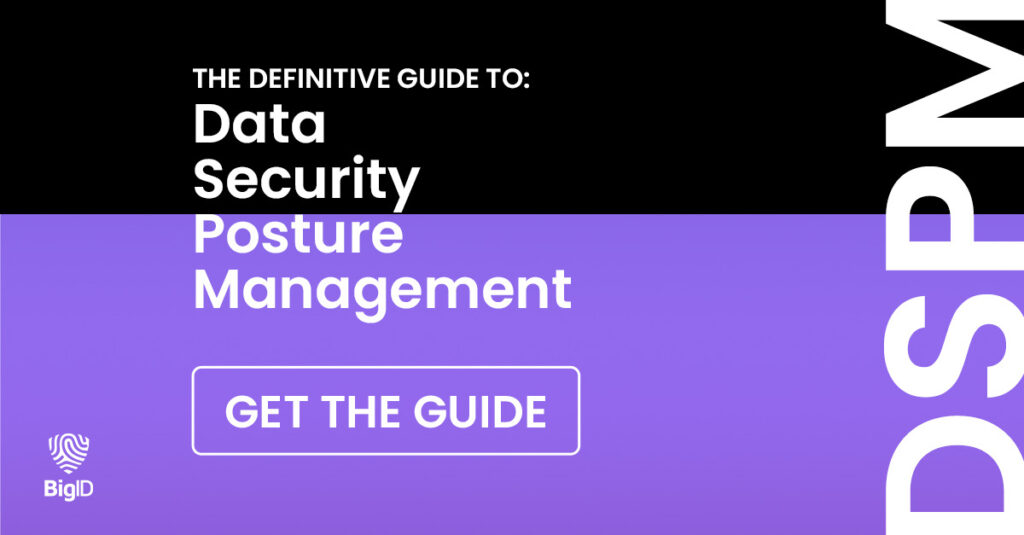
How Does DSPM Work?
DSPM provides you with the tools to manage, assess, and prevent data loss at scale. A DSPM solution helps your security team evaluate security controls and finds vulnerabilities using vulnerability scanning, penetration testing, cloud storage, and data center security audits.
Once risks are identified, the tool and security team modify security configurations and controls. This includes changes to firewall rules, data access permissions, and intrusion prevention system (IPS) settings.
In general, DSPM security platforms are “agentless”. That means the system does not require the installation of additional software (agents) on each device and resource it monitors.
Key Components of DSPM That Help Reduce Your Data Risk
Data security experts will disagree on the finer details of the process, but are mostly agreed that DSPM offers the following components:
However, these components can be expanded to encompass:
Data Discovery and Classification Across Data Stores
Business data—usually a combination of structured and unstructured data—is usually spread across various locations on the premises and in the cloud. Mapping it manually can take a long time. DSPM helps automate the identification of all business data across repositories, infrastructure, and networks.
After the data is discovered and identified, it can be classified based on:
- Sensitivity: Protected health information (PHI) and personally identifiable information (PII) need more protection than publicly available knowledge.
- Access: Not everyone should have the ability to view and use sensitive data
- Processing: How is the data being stored, handled, and used
- Regulatory Requirements: Whether the data is protected under a regulatory framework
Security Assessments for Real-Time Risk Identification and Prioritization
A data security posture management solution follows data movement across the organization and identifies potential security threats. The process may require network scans, vulnerability scans, penetration testing, and a review of access controls and encryption protocols.
Software misconfiguration could lead to data leaks or breaches. DSPM may use threat intelligence databases to identify any such misconfigurations.
This is when the user access permissions may also be assessed. If overentitlement—or overpermissioning—has been granted to users, it can be a security threat. DSPM solutions automate the process of revoking or reducing access to the data, allowing users just enough to do their jobs and no more to reduce potential security risks and vulnerabilities arising from overpermissioning.
Data Security Strategy for Risk Remediation and Response
DSPM solutions come with real-time dashboards and reports that prioritize vulnerabilities. They rank them on severity so that security teams can focus on the ones that are most critical first.
They often include step-by-step remediation instructions or incident response playbooks for active threats. Some of them can automatically make changes to system configurations, access controls, and security settings to prevent data exposure, often working with DevOps processes to reduce the risk of potential data breaches.
Compliance and Reporting
Data, especially sensitive consumer and business data, is protected by laws and your business must meet the regulatory requirements or face hefty fines. DSPM solutions can help with:
- Benchmarking, or comparing current security practices against industry standards and regulatory requirements to ensure compliance.
- Catching violations and identifying instances where practices do not meet required standards.
- Alerting and documenting by informing your security teams of data security compliance issues and generating reports demonstrating adherence to regulatory compliance regulations.
Seamless Integration and Scalability
A DSPM solution connects with your existing infrastructure and tools, integrating with existing systems like security information and event management (SIEM), IT service management (ITSM), and various multicloud (private, public cloud services and hybrid ones) environments. This gives you a unified security approach without replacing what you already have.
In addition, DSPM solutions also grow and adapt to the organization’s changing security needs. As your business expands or as new security challenges emerge, the data security platform can scale accordingly to maintain effective data protection.
The Importance of Data Security Posture Management
Your organization constantly faces data security risks and vulnerabilities. If not protected, you may find yourself dealing with cyberattacks, breaches, and audits that could result in heavy fines. The problem is, the threats are constantly evolving. Your data protection solution must also adapt to new risks.
That’s what DSPM offers.
By adopting a proactive and strong posture, your security and risk management teams can head off potential threats and minimize their likelihood. This, in turn, impacts on your reputation, financial stability, and legal compliance.
Here’s how a strong security posture using DSPM reduces security risks and attacks.
Protect Sensitive Data and Prevent Data Exposure
As a company, you must safeguard your data in the digital age. The impact of a data breach can be financial losses, erosion of trust, and customer attrition. Sensitive data, in particular, is regulated by laws, including PII, PHI, and the payment card industry (PCI). These add another layer of complexity.
The cloud does offer unparalleled flexibility. However, it introduces challenges in protecting sensitive data, often leading to inadvertent exposures.
DSPM solutions provide ‘data first’ security, with visibility into where sensitive data resides, enabling appropriate security controls and data governance. They help classify it and continuously monitor your organization’s security posture. This proactive approach allows you to protect and prevent the exposure of your most sensitive information. It also helps avert potential fines and keep you safe from regulatory consequences.
Reduce Your Data Attack Surface
Unused copies and outdated versions of data present a significant risk within organizations. Data copies that are created for testing, accidentally duplicated, or generated by third-party applications without explicit knowledge, increase the potential attack surface.
A DSPM platform plays a pivotal role in automatically monitoring this shadow data and versions of sensitive data. It discovers and classifies sensitive data across the cloud environment, verifies policy adherence, and offers remediation guidance.
Empower Value Creators
Traditional security approaches confined data within walled perimeters managed by gatekeeper-style security teams. However, the contemporary business landscape demands data democratization, which allows everyone, regardless of technical expertise, to work with it.
DSPM capabilities empower your security team to support data democratization efforts. The tools monitor for unauthorized access to sensitive data without hindering cloud performance. They promote innovation and strike a balance between facilitating work and ensuring data security and compliance.
Achieve Faster Data Security and Compliance
Cloud compliance regulations can be a significant challenge for security teams. DSPM uses automation to ensure continuous cloud data security. It prevents security incidents by detecting and alerting whenever sensitive and regulated data violates data residency requirements.
It separates the environment based on data privacy requirements and business needs, which turns data inventory and classification efforts into tangible compliance reports. This helps with diverse regulations and proves your commitment to security to auditors and regulatory bodies.
Reduce Your Cloud Costs
Cloud providers charge users based on consumption, making unused data in the cloud a financial burden. DSPM addresses this issue by identifying duplicate, redundant, and abandoned data and providing actionable remediation steps to eliminate unnecessary costs and risks.
By actively managing and optimizing data storage in the cloud, you can significantly reduce expenses associated with unused data, align cloud costs with actual utility, and improve overall financial efficiency.
Getting started with DSPM
Regardless of your chosen DSPM provider, your security strategy must be based on a firm foundation. However, once you’ve decided upon the one you want, here’s how to get started:
DSPM Deployment
Deploying DSPM depends on several factors, such as your provider, your business ecosystem, and your data security needs. While there is no set formula, these are the steps you’d need to take for a smooth and successful deployment.
- Understand your organization’s security needs: Understand your organization’s security needs. Determine the type of data you have and check if it is regulated by industry standards or governance to decide on the appropriate security level.
- Identify a solution that matches your requirements: In addition to providing security, you need to look for a DSPM solution that’s within your budget. It should also scale with your business as it grows and be easy to use for your team. Finally, it should integrate seamlessly with your existing technologies.
- Prepare your team: Establish definitive policies and procedures, where each member of the security team understands their responsibilities. That can make the adoption of the solution easier and more likely to succeed.
- Configure your DSPM solution: Once the solution adapts to your organization’s data flows and typical behavior, it will implement security policy adjustments. It may also provide custom recommendations for policy changes to ensure better protection.
- DSPM integration with various security tools: Incorporate the DSPM with your other data security solutions, ideally during initial deployment. The most effective DSPM solutions will integrate with your stack natively and automatically.
DSPM Integrations
DSPM tools are able to work effectively with other security technologies, enhancing overall data security. Here’s how DSPM integrates with various tools:
- IAM: Identity and access management ensures that only authorized users access sensitive data. DSPM automates the enforcement and management of authentication and access controls.
- CASBs: Cloud access security brokers provide visibility into cloud infrastructure, enforce data protection policies, and prevent unauthorized cloud access. DSPM extends data security to cloud data stores.
- EDR: Monitors and detects threats on endpoints in real time. DSPM ensures data security policies are in sync with endpoint detection and response solutions.
- SIEM: This consolidates and analyzes data to detect and respond to incidents. DSPM integration enhances visibility and correlation, strengthening data security.
- DLP: A data loss prevention solution protects sensitive data from loss or theft. DSPM monitors and controls data movement, preventing unauthorized access or disclosure. Learn more about the difference between DSPM vs DLP.
- IDPS: An intrusion detection and prevention system monitors for suspicious activity to prevent unauthorized access to data, data assets, or malicious traffic. DSPM enables real-time monitoring and alerting for proactive prevention.
- Security Analytics: This uses machine learning to identify potential threats by recognizing patterns and anomalies. DSPM integration provides real-time threat detection and actionable insights to improve security posture.
These integrations make your data security posture management more robust and effective by ensuring comprehensive coverage and seamless collaboration with existing security and data protection tools.
DSPM Best Practices
Effective DSPM requires careful configuration and planning, focusing on five key practices:
- Discover and Classify Data: Achieve visibility and control over sensitive data through classification to help prioritize security efforts.
- Restrict Access and Implement Least Privilege: Manage and limit data access to reduce breach risk and ensure compliance.
- Continuous Risk Assessment and Auditing: Regularly monitor data stores and activity against security standards and regulations.
- Prioritize Risk and Remediation: Analyze and score data risks, setting up alerts and rapid response mechanisms.
- Establish Policies and Procedures: Create and enforce data handling policies to minimize errors and misuse.
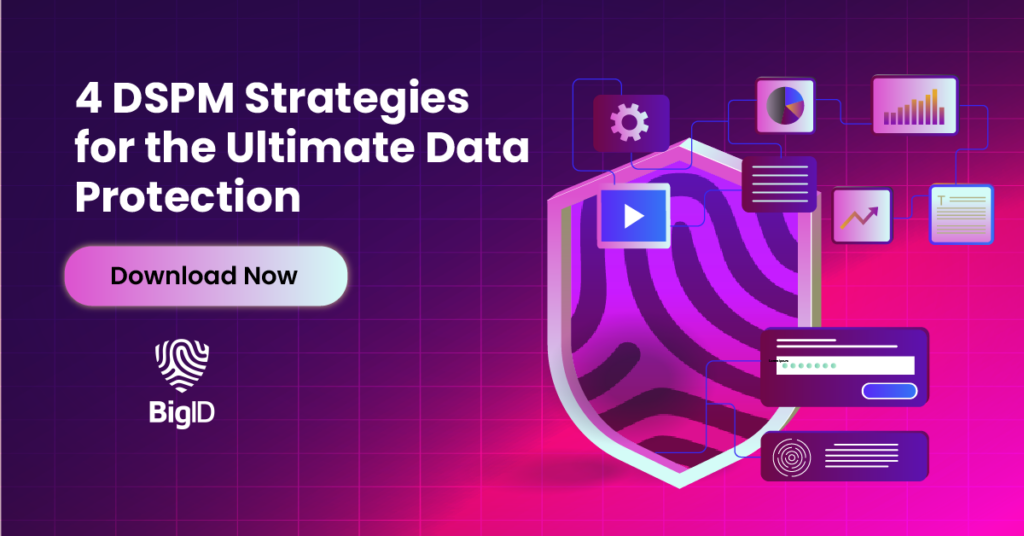
The Difference Between DSPM and CSPM
Overall Data Security (On-Premises + Cloud)
Data security posture management focuses on securing data across both on-premises and cloud environments. It helps identify and assess risks, monitor security controls, and plan for incident responses.
Cloud-Specific Security
Cloud security posture management, or CSPM focuses specifically on the security requirements of cloud data. It identifies and manages risks and compliance issues in cloud environments through asset discovery, configuration management, access management, and detection and response to threats.
In essence, the difference between DSPM and CSPM is that while both are used to mitigate security and privacy risks, one focuses on overall data while the other prioritizes effective cloud data security.
You might need CSPM if your company uses cloud-based services, such as AWS, Microsoft Azure, or Google Cloud. However, if you store any data, you must prioritize security and consider a holistic approach.
How to Choose a DSPM Solution?
Data Classification
- Comprehensive visibility: The ability to see all data within your organization, whether known or previously undiscovered.
- Details: Information about data type, location, owner, as well as access permissions, and the overall security.
Data Hygiene
- Remediation: Tools to clean up misplaced, redundant, and obsolete data.
- Continuous Monitoring: Policies and mechanisms that keep data clean and up-to-date continuously.
Risk Management
- Prioritization: Identifying which security issues pose the greatest risk based on the data sensitivity.
- Detection and Remediation: Finding and fixing overexposed, unprotected, or misplaced data.
Access Governance
- User Identification: Identifying all users, roles, and resources that have access to sensitive data.
- Privilege Enforcement: Ensuring that users have the correct level of access privileges, neither too much nor too little.
Privacy and Compliance
- Violation Detection: Identifying when data handling practices violate regulatory or industry standards.
- Compliance Reporting: Generating reports that demonstrate compliance with relevant regulations, ready for audits.
Additional Considerations
- Integration Capabilities: The DSPM should seamlessly integrate with your existing tools and infrastructure to create a cohesive security strategy.
- Automation: The solution should automate as many processes as possible, including monitoring, risk assessment, and remediation, to reduce manual effort and increase efficiency.
- Scalability: The ability to grow and adapt as your organization expands and as your security needs evolve.
- User-Friendly Interface: Intuitive dashboards and reporting tools that provide clear, actionable insights and make it easy to manage your data security posture.
DSPM with BigID
BigID is a data intelligence platform for privacy, security, and governance that reduces risk, improves the security posture of data, and orchestrates controls.
Our solution automatically identifies and protects sensitive and regulated data across the cloud, on-prem, and SaaS. It also offers data security posture management to mitigate the risk of unauthorized exposure and regulatory non-compliance.
Powered with generative AI, our intuitive platform allows you to gain complete visibility and control across all your data to assess and improve your security posture wherever your data resides. With BigID’s data-centric approach, you can automatically map, monitor, and remediate data under one platform.
Equip your organization with the critical capabilities of DSPM with BigID’s data discovery, user access maps, data flow tracking, protection against data exposure, and data security posture reports.
Reduce risk across your entire business with BigID.
Get a 1:1 demo here with our security experts today.
Frequently Asked Questions
What is DSPM?
DSPM stands for data security posture management. It is a process and framework that helps organizations identify, assess, and manage data security risks across on-premises and cloud environments.
How does DSPM work?
DSPM continuously monitors data security, identifies risks, assesses vulnerabilities, and provides remediation strategies. It uses techniques like vulnerability scanning, penetration testing, and security audits.
Why is DSPM important?
DSPM is crucial for reducing data breach risks, ensuring compliance with regulations, and protecting sensitive data. It helps organizations maintain a strong data security posture.
What are the key components of DSPM?
The key components include data discovery and classification, risk assessment and prioritization, remediation and prevention, compliance and reporting, and seamless integration and scalability.
Does DSPM integrate with other security tools?
DSPM integrates with IAM, CASBs, EDR, SIEM, DLP, IDPS, and security analytics tools to provide a comprehensive security solution. This integration enhances visibility, automates enforcement, and strengthens overall data security.
What should I look for in a DSPM platform?
Look for features like global data visibility, data hygiene, intelligent risk management, access governance, privacy and compliance capabilities, integration with existing tools, automation, scalability, and a user-friendly interface.



